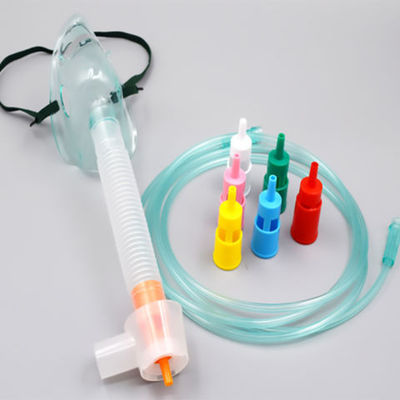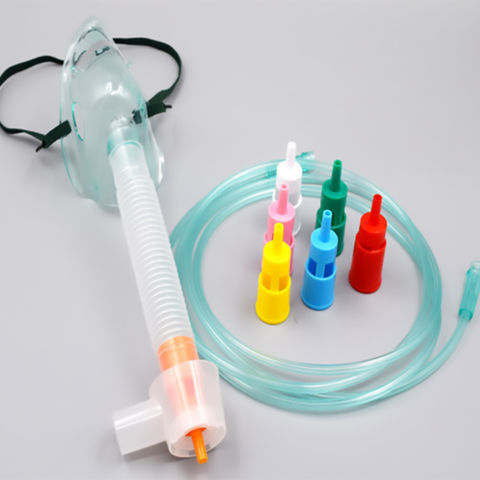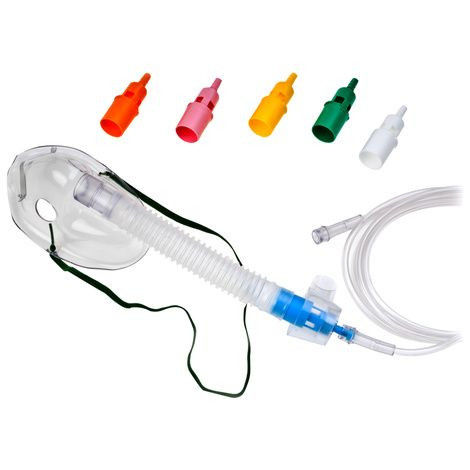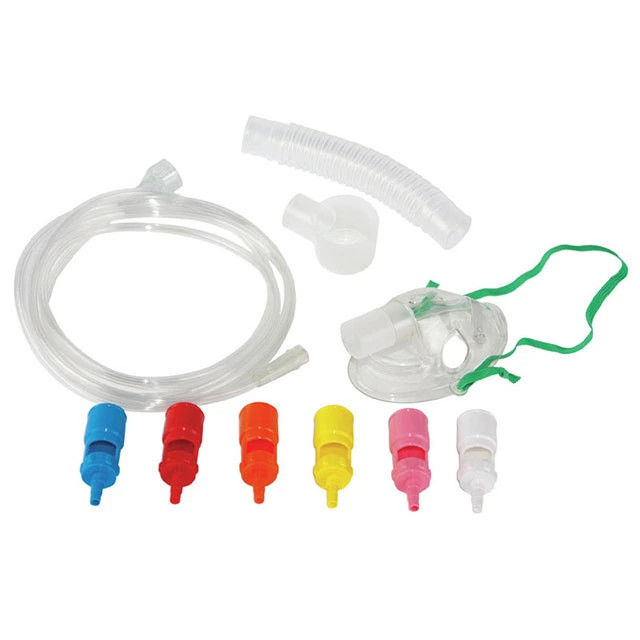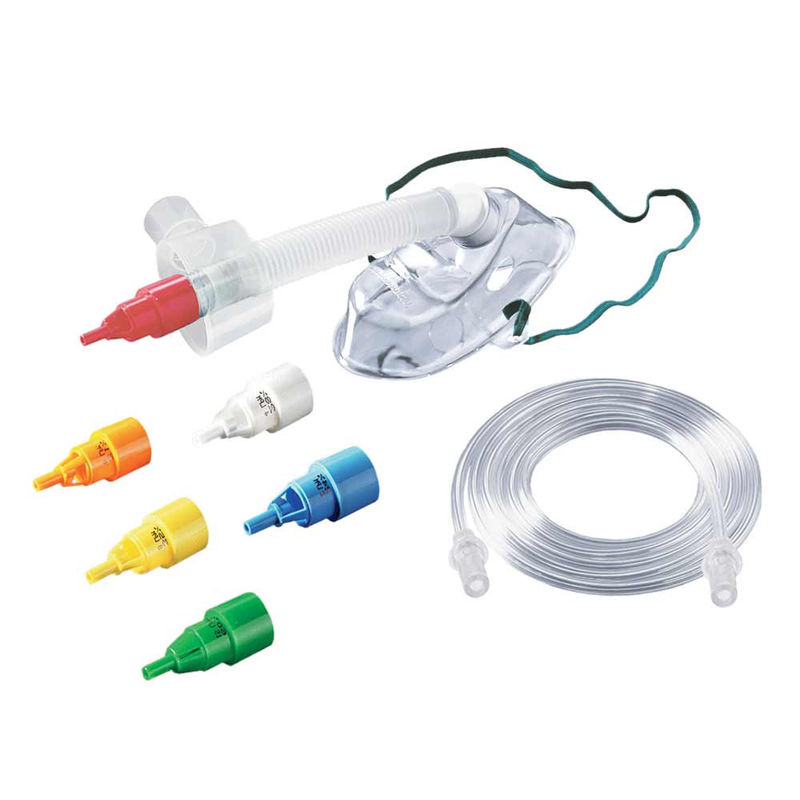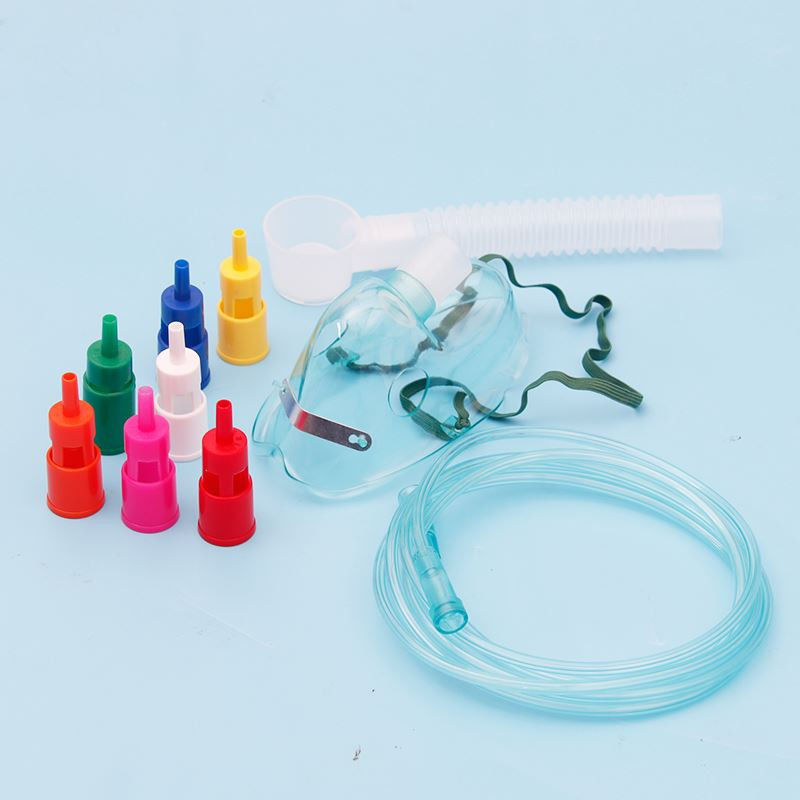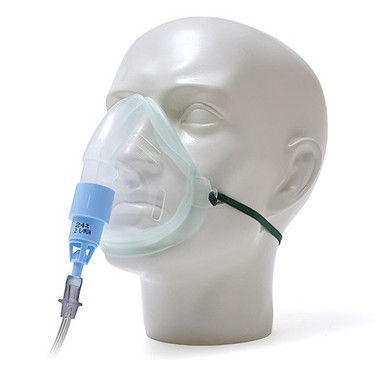-
Highlight
Oxygen Concentration Venturi Mask
,Adjustable Venturi Mask
-
Place Of OriginChina
-
Brand NameOEM Brand
-
Disinfecting TypeEO
-
SizeXS,S,M,L,XL
-
StockNo
-
Shelf Life5 Years
-
MaterialPVC
-
Quality CertificationCE ISO
-
Instrument ClassificationClass I
-
Safety StandardISO13485
-
PropertiesMedical Materials & Accessories
-
TypeSurgical Supplies
-
NameVenturi Mask
-
CertificateISO/CE
-
OEMAvailable
-
ColorTransparent ,green
-
Oxygen Concentration24%,28%,31%,etc
-
Tube Length2m,2.5m,etc
-
Place of OriginChina
-
Brand NameHenan Aile
-
CertificationCE
-
Model NumberAdult/Pediatric
-
Minimum Order Quantity5000pcs
-
PriceNegotiable
-
Packaging DetailsIndividual Packaging
-
Delivery Time24-30 days
-
Payment TermsL/C, T/T, Western Union
-
Supply Ability50000000pcs per month
Venturi Mask Oxygen Concentration Venturi Adjustable Oxygen Masks
Venturi mask oxygen concentration venturi adjustable oxygen masks
1. Disposable Design:
- The mask is intended for single-use, and it is disposed of after each use. Disposable masks help maintain hygiene and prevent cross-contamination.
2. Multi-Vent:
- The mask is equipped with multiple vents or openings, allowing the adjustment of the oxygen concentration delivered to the patient. Each vent corresponds to a different concentration level.
3. Portable:
- The term "portable" suggests that the mask is designed for easy transport and use in various settings, including clinical environments, ambulances, or other healthcare settings.
4. Adjustable Venturi System:
- The mask features an adjustable Venturi system, which allows healthcare professionals to select and control the precise oxygen concentration delivered to the patient. This is achieved by adjusting the size of the vent openings.
Key Features and Functions:
- Venturi System:
- The Venturi system uses different-sized vents to control the flow of oxygen and air, resulting in variable concentrations of oxygen. The specific concentration is selected based on the patient's oxygen requirements.
- Color-Coded Vents:
- The vents are often color-coded to correspond to specific oxygen concentrations. This coding simplifies the selection process for healthcare providers.
- Elastic Straps:
- Elastic straps secure the mask in place on the patient's face, ensuring a comfortable and snug fit.
-Adjustable Nose Clip:
- An adjustable nose clip is included to enhance the fit of the mask on the patient's face.
- Oxygen Tubing:
- The mask is connected to an oxygen source through tubing. The adjustable Venturi system allows for the precise delivery of oxygen to meet the patient's needs.
![]()
How It Works:
1. Oxygen Source:
- The mask is connected to an oxygen source, such as an oxygen cylinder or wall outlet.
2. Venturi System Adjustment:
- Healthcare professionals can select the desired oxygen concentration by adjusting the size of the vent openings on the mask.
3.Oxygen Delivery:
- The adjustable Venturi system controls the ratio of oxygen to air delivered through the mask, ensuring the patient receives the prescribed concentration.
Considerations:
- Prescribed Oxygen Concentration:
- The specific oxygen concentration is prescribed by a healthcare provider based on the patient's condition and oxygen needs.
- Monitoring:
- Patients using adjustable Venturi masks may require continuous monitoring to ensure they receive the correct oxygen concentration.
- Disposable Nature:
- Since the mask is disposable, it should not be reused to prevent the risk of contamination.
- Color-Coding Recognition:
- Healthcare professionals should be familiar with the color-coded system to quickly identify the intended oxygen concentration.
Feature:
-Made of medical grade PVC.
-Transparent and soft vinyl for patients' comfort.
-Visual patients' assessment adjustable nose clip assures comfortable fit adults.
-Tubing length could be customized, medium concentration with 7th anti-crush tubing.
-DEHP free and Latex free
![]()
| Cat.NO. | Type |
| SR14161101 | Adult standard |
| SR14161102 | Adult elongated |
| SR14161201 | Pediatric standard |
| SR14161202 | Pediatric elongated |
![]()
How much oxygen can you give through a Venturi mask?
The amount of oxygen delivered through a Venturi mask is determined by the Venturi system, which includes different-sized vent openings or adapters. These adapters are color-coded to represent specific oxygen concentrations. The precise oxygen percentage delivered depends on the flow rate of oxygen and the size of the selected Venturi adapter.
Here are some common color-coded Venturi adapters and their corresponding approximate oxygen concentrations:
- White (24%): Flow rate of 4-6 liters per minute (L/min)
- Blue (28%): Flow rate of 4-8 L/min
- Yellow (35%): Flow rate of 8-10 L/min
- Red (40%): Flow rate of 10 L/min
- Green (60%): Flow rate of 12-15 L/min
These percentages are approximate and can vary based on the design and manufacturer of the Venturi mask. The oxygen concentration is adjusted by selecting the appropriate color-coded Venturi adapter and adjusting the oxygen flow rate to achieve the desired concentration.
Venturi system masks can deliver between 24% and 60% oxygen, depending on the connector used.
What does a Venturi mask do for a patient?
The Venturi mask, as all the aforementioned low-flow systems, provides oxygen at flow rates that are lower than patients' inspiratory demands; thus, when the patient's inspiratory flow exceeds the gas flow rate from the mask, room air is entrained.
1. Precision Oxygen Delivery:
- The Venturi mask provides a way to deliver a specific and controlled concentration of oxygen to the patient. This is crucial for patients with respiratory conditions that require precise oxygen therapy to maintain adequate oxygen levels in their blood.
2. Adjustable Oxygen Concentrations:
- The Venturi system includes color-coded adapters, each corresponding to a specific oxygen concentration. Healthcare professionals can select the appropriate adapter based on the patient's oxygen therapy prescription and adjust the flow rate to achieve the desired concentration.
3. Tailored Oxygen Therapy:
- The ability to adjust oxygen concentrations makes the Venturi mask suitable for patients with varying respiratory needs. It allows healthcare providers to tailor the oxygen therapy to the specific requirements of each patient.
4. Management of Chronic Respiratory Conditions:
- Venturi masks are often used in the management of chronic respiratory conditions such as chronic obstructive pulmonary disease (COPD), asthma, or other respiratory diseases. The precise delivery of oxygen helps alleviate symptoms and improve oxygenation in patients with compromised lung function.
5. Prevention of Hyperoxia or Hypoxia:
- By providing a controlled and adjustable concentration of oxygen, the Venturi mask helps prevent both hyperoxia (excessive oxygen levels) and hypoxia (insufficient oxygen levels). Maintaining an appropriate oxygen concentration is crucial for the patient's overall well-being.
6. Optimal Oxygen Saturation:
- The goal of using a Venturi mask is to achieve and maintain optimal oxygen saturation levels in the patient's blood. This is monitored through pulse oximetry, which measures the percentage of oxygen saturation in the arterial blood.
7. Use in Acute and Chronic Settings:
- Venturi masks can be used in various healthcare settings, including acute care in hospitals, emergency departments, and chronic care in outpatient settings. They are versatile and suitable for both short-term and long-term oxygen therapy.
![]()
What is the difference between venturi mask and oxygen mask?
Nasal cannulas and simple face masks are typically used to deliver low levels of oxygen. Another type of mask, the Venturi mask, delivers oxygen at higher levels. Sometimes nasal cannulas are also used to deliver high levels of oxygen.

